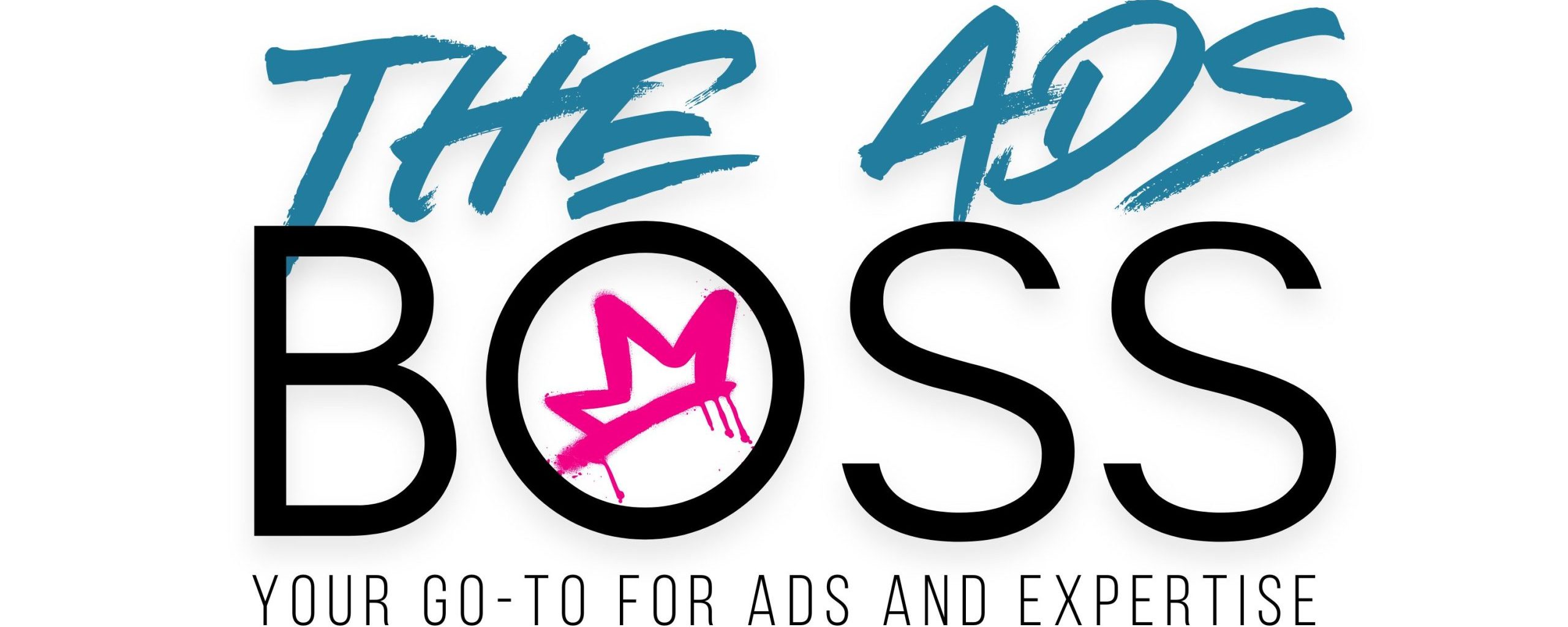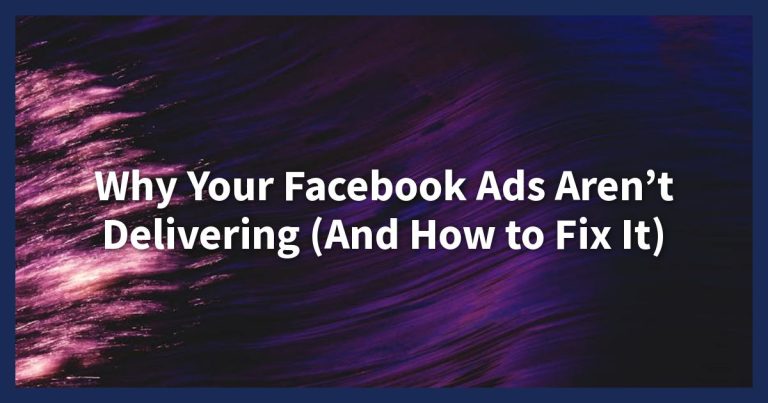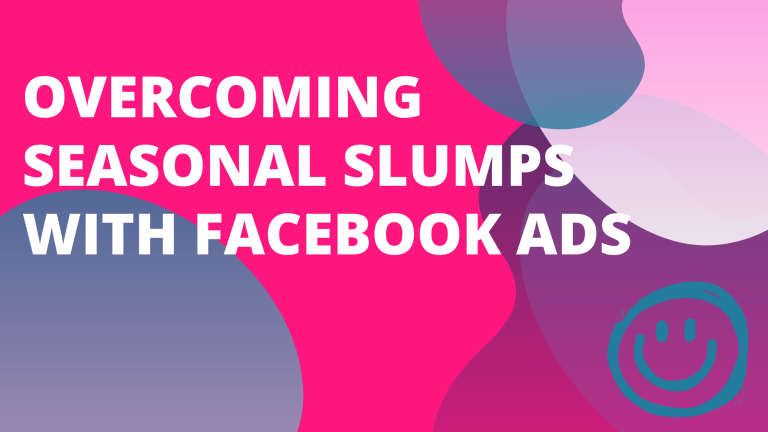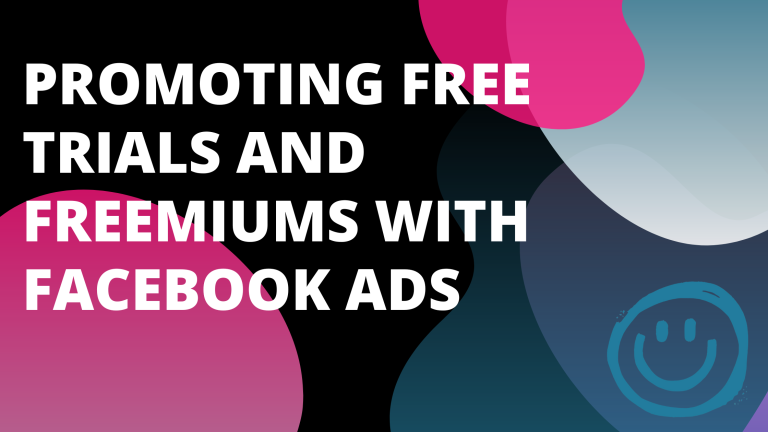Diversifying Your Revenue Streams with Facebook Ads

Revenue diversification isn’t just a smart move—it’s essential for stability and growth in today’s business environment. Relying on a single income source makes your business vulnerable to sudden shifts and market changes. That’s where Facebook Ads step in. With precise targeting and flexible formats, they offer a direct way to reach new audiences and explore multiple revenue opportunities. Whether you’re selling products, offering services, or driving traffic, Facebook Ads can help you branch out. Ready to make your income streams more secure? Let’s get started.
Understanding Revenue Streams
Revenue streams are the backbone of any business. They represent the ways you bring money into your company. Without them, growth and sustainability are impossible. For businesses running Facebook Ads, understanding revenue streams is crucial. It helps you pinpoint where your income comes from and identify opportunities for expansion. Let’s break this down further.
What Are Revenue Streams?
Revenue streams are the sources of money flowing into your business. They can be categorized into three key types:
- Primary Revenue Streams
These are your main sources of income. For example, if you run an e-commerce store, your primary revenue stream would be the sales of your products. Most businesses rely heavily on these streams, but they shouldn’t stop there. - Secondary Revenue Streams
Think of these as complementary sources of income. They’re not your main focus but still contribute to your bottom line. For instance, if you sell physical products online, creating a paid subscription service for exclusive discounts could serve as a secondary stream. - Passive Revenue Streams
These generate income with little effort once set up. Examples include affiliate marketing, ad revenue from content, or royalties. They’re ideal for adding a layer of stability and diversifying your income portfolio.
By examining your business model and goals, you can identify potential revenue streams in these categories and develop strategies to maximize them.

Benefits of Diversifying Revenue Streams
Relying on just one revenue source comes with major risks. A single shift in the market could put your entire business at stake. Diversifying is like having multiple lifeboats instead of just one—if something goes wrong, you’re still afloat. Here are the key advantages:
- Risk Management:
Multiple income streams reduce the impact of losing one source. If one slows down, others can keep your business steady. - Increased Stability:
A diversified revenue model ensures consistent cash flow. This is especially helpful in industries with seasonal demand swings. - Higher Profitability:
Expanding into new revenue streams compounds your income. For example, an online store adding a subscription box model is layering new profits on top of existing sales.
Diversifying is not just about protecting yourself from market challenges—it’s about building a more profitable, scalable business. With platforms like Facebook Ads, you can attract different audiences, test new strategies, and unlock fresh revenue sources. Why settle for one stream when you can create a river of opportunities?
Overview of Facebook Ads
Facebook Ads have become a proven way to grow businesses and boost revenue. With millions of active users daily, Facebook offers an unrivaled platform for reaching diverse audiences. More importantly, it provides tools that allow businesses of all sizes to advertise effectively without blowing through their budgets. Whether you’re promoting an online store, generating leads, or selling a service, Facebook Ads make it possible to tailor campaigns to meet your goals. Let’s explore why Facebook Ads are such a powerful tool and the variety of ad formats available to you.
Why Choose Facebook Ads?
What makes Facebook Ads stand out from other advertising methods? It boils down to three main benefits: reach, targeting options, and cost-effectiveness.
- Unparalleled Reach:
With over 2 billion monthly active users, Facebook provides access to a vast and diverse audience. It doesn’t matter if you’re targeting a niche group or a broad market; there’s a good chance your ideal customers are already scrolling through their feeds. Combining this reach with advanced tools gives businesses an edge in visibility. - Advanced Targeting Options:
One of Facebook’s defining features is its data-driven targeting. You can zero in on specific demographics, interests, behaviors, and even locations. Want to target business professionals aged 25 to 45 who recently showed interest in fitness gear? Facebook makes it possible. This precision ensures your ads are shown to people most likely to engage, helping you reduce wasted ad spend. - Cost-Effectiveness:
Facebook Ads are flexible and scalable. You can control your daily or lifetime budget to match the resources you have, making it doable for small and large businesses alike. Thanks to detailed analytics, you also get to see exactly how your money is being spent, so you can adjust campaigns for better results.
These advantages not only make Facebook Ads appealing but also give you the freedom to experiment and try new approaches without breaking the bank.
Types of Facebook Ads
Not all ads are created equal, and Facebook provides several formats to help you connect with your audience in the most effective way. Here’s an overview of the main types:
- Image Ads:
Simple yet impactful, these ads use a single image and a short text description to grab attention. They’re ideal for quick promotions, special offers, or announcements. Think of this format as a billboard in a busy digital street. - Video Ads:
Great for storytelling, video ads can showcase your product or service in action. Whether it’s a quick 15-second teaser or a longer demo, videos tend to generate high engagement rates. Don’t underestimate the power of showing versus telling. - Carousel Ads:
These allow users to swipe through a series of images or videos in one ad. Perfect for highlighting multiple products, features, or steps in a process. For instance, an e-commerce store might use this format to display different items within a single campaign. - Collection Ads:
Designed for mobile users, this format pairs a video or main image with a product catalog below. When clicked, it opens a fast-loading experience where users can explore your products further.
Each format serves a different purpose, so choosing the right one depends on your campaign goals. Need to increase awareness? Use a catchy image ad. Want to drive sales? Try a collection ad paired with a compelling catalog.
By understanding these options and combining them with Facebook’s targeting capabilities, you can tailor your approach to maximize results.
Strategies for Diversifying Revenue with Facebook Ads
Facebook Ads are powerful, but using them effectively takes strategy. To diversify your revenue streams, you need more than generic campaigns. You must understand your audience, tailor your approach, and test different methods. Below are actionable strategies to get the most out of your Facebook Ads and create multiple income channels.
Identifying Target Audiences
Knowing your audience is the foundation of a successful ad strategy. If your ads aren’t reaching the right people, it’s like shouting into a void. Facebook’s advanced targeting tools make it possible to segment audiences by:
- Demographics: Age, gender, education level, job title, etc.
- Location: Target specific cities, regions, or countries.
- Interests and Behaviors: Shopping habits, hobbies, travel preferences, and more.
Start by analyzing your existing customers. What do they have in common? Use Facebook Audience Insights to find patterns. Break your audience into smaller groups, such as loyal customers, first-time buyers, or people interested in certain products. Tailored ads create stronger engagement and higher conversions because you’re speaking directly to their needs.
Creating Multiple Ad Campaigns
Relying on one ad to do all the work is a mistake. Instead, diversify your approach by running distinct campaigns for different products or services. For example:
- Use one campaign to promote your flagship product.
- Create another to highlight a seasonal offer.
- Run a separate campaign for upselling or cross-selling related items.
This strategy widens your revenue opportunities. Each campaign can address a unique segment of your audience, ensuring no stone is left unturned. Test different headlines, visuals, and call-to-actions to see what resonates with each group. Think of it as casting multiple nets to catch different types of fish.
Utilizing Retargeting Ads
Not every visitor to your site becomes a customer on their first visit. That’s where retargeting comes in. Retargeting ads help you reach people who’ve interacted with your website, app, or previous ads but didn’t convert. Here’s how to make the most of it:
- Create a Custom Audience: Use Facebook Pixel to track site visitors and build a list based on their actions—like abandoned carts or page views.
- Tailor Your Messages: Focus on addressing objections or offering incentives, like a discount or free shipping.
- Use Dynamic Ads: Automatically show people the products they browsed on your site.
Retargeting keeps your brand top-of-mind and turns previous visitors into paying customers. Losing potential sales? Retarget them into second chances.
Leveraging User-Generated Content
People trust reviews and recommendations more than brand messaging. Why not use that to your advantage? By incorporating user-generated content (UGC) into your ads, you can build credibility and connect with potential customers. Examples include:
- Customer Testimonials: A short quote or video from a satisfied buyer.
- Product Reviews: Highlight positive feedback from your audience.
- Photos or Videos: Content created by your customers showing how they use your product.
To gather UGC, ask your loyal customers for permission to feature their posts or reviews. Many people are happy to contribute, especially if you offer a small incentive like a discount. UGC not only builds trust but also makes your ads authentic and relatable.
Collaborating with Influencers
Influencers can amplify your reach and give your ads a more personal touch. Choose influencers whose followers align with your target audience. Micro-influencers, with smaller but highly engaged audiences, can often deliver better results than big-name celebrities.
Ways to collaborate include:
- Sponsored Posts: Partner with influencers to feature your product in their content.
- Co-Created Ads: Have influencers appear in your Facebook Ads to promote your brand.
- Affiliate Campaigns: Offer influencers a commission for each sale they drive through their unique affiliate link.
Influencers bring trust and credibility to your ads, especially when they show genuine enthusiasm for your product. Partnering with the right influencer can open doors to new audiences and revenue streams.
By combining these strategies, you’re not just running Facebook Ads—you’re creating a systematic approach to diversifying your revenue. Test, analyze, and refine your efforts to ensure your campaigns drive meaningful results.
Tracking and Analyzing Ad Performance
Launching Facebook Ads is just the first step. To see real results, you need to track performance and adapt as you go. Metrics don’t just give you numbers—they tell a story about what’s working, what isn’t, and where you should focus your resources. Let’s break this down.
Key Metrics to Monitor
Watching the right metrics will guide your decision-making. Here are some essentials to keep an eye on:
- Click-Through Rate (CTR)
This tells you how appealing your ad is to your audience. A low CTR might mean your ad isn’t engaging enough or it’s targeting the wrong group. - Cost Per Click (CPC)
CPC shows how much you’re paying for each click on your ad. A high CPC may point to competition or the need to refine your targeting. - Return on Investment (ROI)
ROI is critical. It measures the profitability of your campaign. If your ROI is negative, it’s time to rethink your strategy. - Conversion Rate
This tracks the percentage of people who complete a desired action, like making a purchase or filling out a form. It helps you assess how effective your landing page and ad are. - Ad Frequency
Frequency measures how often the same user sees your ad. If it’s too high, your audience might get annoyed, leading to ad fatigue. - Relevance Score/Quality Ranking
Facebook assesses how relevant your ad is based on user interactions and engagement. A low score signals you may need to rethink your ad’s content or audience targeting.
Keep a habit of checking these metrics regularly using Facebook Ads Manager. This data will build the foundation for smarter campaigns.

Adjusting Campaigns Based on Insights
Numbers alone won’t improve your ads. It’s what you do with the data that counts. Use these actionable tips to tweak your campaigns and get better results:
- A/B Test Creatives
Struggling to connect? Test different images, videos, headlines, or calls-to-action. Small tweaks—like changing your copy’s tone—can lead to major improvements. - Refine Your Audience
Look at engagement data to spot patterns. Is one group interacting more than others? Narrow or expand your targeting accordingly. For example, if your ad is doing well among a certain age range, focus on that group. - Set Clear Goals
Are you trying to drive sales, generate leads, or increase awareness? Align your metrics with your end goal. For example, if conversions matter most, focus less on CPC and more on conversion rate. - Adjust Budget Allocation
Put more money into campaigns that perform well. Pause or reduce funding for ads that aren’t delivering results. This simple shift can boost your ROI without increasing your total ad spend. - Optimize Ad Timing
Use Facebook data to identify when your audience is most active. Running ads during these peak times increases visibility and engagement. - Address Ad Fatigue
If performance dips, it could mean your audience is seeing your ad too often. Refresh your creatives or lower your ad frequency to avoid wearing out your audience. - Focus on the Funnel
If your CPC is low but your conversion rate is lagging, there may be a disconnect after the click. Check your landing page and ensure it matches the promises made in the ad.
Track, test, and tweak—it’s a cycle. Instead of guessing, base your changes on actual data. Just like a mechanic tunes an engine for peak performance, you’ll keep fine-tuning your campaigns to get the best possible outcomes.
Case Studies: Success Stories
When it comes to diversifying revenue, Facebook Ads have shown remarkable success across a range of industries. From global e-commerce brands to small-town businesses, countless organizations have unlocked growth and discovered new income streams. Below, we’ll explore how both large and local brands have harnessed the power of targeted advertising.
Successful E-commerce Brands
E-commerce businesses are built on visibility, and Facebook Ads excel in delivering that. By combining audience insights with compelling ad formats, many online stores have transformed their strategies and added new revenue streams.
Example: Gymshark
Gymshark, a fitness apparel brand, saw exponential growth through Facebook Ads. By using lookalike audiences, Gymshark targeted users similar to their existing customers. Their campaigns included a mix of video ads showcasing workouts with eye-catching gear and carousel ads highlighting multiple product options. This strategy not only boosted sales but also opened doors to international markets, creating a consistent flow of new revenue.
Example: MVMT Watches
MVMT Watches leveraged sleek, lifestyle-oriented ads to scale their online business. They frequently ran retargeting campaigns, reminding past website visitors about products they browsed. Additionally, MVMT used collection ads, offering users a seamless mobile shopping experience. The result? A significant uptick in sales and a diversified revenue base with repeat customers flowing in from retargeted efforts.
E-commerce success with Facebook Ads often hinges on storytelling, visual appeal, and personalization. Businesses that use these elements can scale faster and stabilize their income streams.
Local Businesses Thriving with Facebook Ads
Facebook Ads aren’t just for big players. Local businesses—like restaurants, gyms, and retail shops—have embraced the platform to drive growth right in their backyards. Targeting customers within geographic areas ensures ads reach the right people, fostering local loyalty and boosting revenue.
Example: A Neighborhood Café
A small café in Austin, Texas, used Facebook Ads to promote their new coffee subscription service. By targeting locals within a 10-mile radius, they reached coffee enthusiasts who frequented similar establishments. The campaign included special offer ads like “Free First Month!” which attracted dozens of new subscribers. This added a steady monthly revenue stream alongside traditional in-store sales.
Example: A Family-Owned Gym
A family gym in Denver took a creative approach with their Facebook Ads. They created short video ads featuring testimonials from members who met fitness goals. Using Facebook’s interest targeting, they reached people who followed health and wellness pages. The results were impressive—membership numbers spiked by 30%, and they started offering virtual classes. This added online memberships as a new source of revenue.
Small businesses thrive when they pair Facebook’s hyper-local targeting with engaging content. It’s about being seen where it matters most—by the people right around the corner.
These case studies highlight how businesses, big and small, can create sustainable, diversified revenue streams with Facebook Ads. By tailoring strategies based on audience needs and leveraging Facebook’s tools, the opportunities are nearly endless.
Common Mistakes to Avoid
When it comes to diversifying your revenue streams with Facebook Ads, the process involves more than just launching campaigns. Success often depends on avoiding common pitfalls that can drain your ad spend and limit your growth. Let’s explore some of the most frequent mistakes businesses make and how you can steer clear of trouble.
Ignoring Audience Research
One of the biggest blunders is skipping out on audience research. If you don’t know who you’re targeting, there’s a good chance your ads won’t connect. Without audience insights, your ad budget is like throwing darts blindfolded—you might hit something, but it’s more likely you’ll miss the mark.
Failing to understand your audience leads to:
- Low Engagement: Ads that don’t resonate won’t get clicks or conversions.
- Higher Costs: Poor targeting means you’ll pay more for fewer results.
- Missed Opportunities: You won’t capture the attention of high-potential customers.
Take advantage of Facebook’s robust targeting tools. Create audience profiles based on factors like demographics, interests, and online behavior. Use tools such as Facebook Audience Insights to dig deeper into your ideal customer. For existing customers, analyze buying habits and preferences—what do they respond to? This data lays the foundation for campaigns that speak directly to their needs.
Still unsure about your audience? Test smaller campaigns with different groups first. Treat it like calibrating a GPS—fine-tuning now saves you time and money later.
Overlooking Ad Optimization
Many businesses set up their ads and leave them running on autopilot. While this approach might seem convenient, it usually leads to wasted spend and underwhelming results. Facebook Ads aren’t a “set it and forget it” solution. They need regular maintenance, like a car that needs oil changes to keep running smoothly.
Here’s what happens when you don’t optimize your ads:
- Ad Fatigue: Audiences lose interest when they see the same ad repeatedly.
- Wasted Spend: Missed opportunities to reallocate budget to high-performing ads.
- Missed Insights: Without testing new creatives or strategies, you won’t know what works best.
To keep ads fresh and relevant:
- Monitor Performance Data: Check metrics like CTR, CPC, and conversion rates weekly.
- Rotate Creatives: Change up visuals, headlines, or offers to keep your audience engaged.
- A/B Test Elements: Test which versions of your ads perform better and scale the winning ones.
- Adjust Targeting: Refine your audience to focus on segments that respond better.
Think of ad optimization as sharpening a tool—each tweak helps you cut through the noise more effectively. A well-optimized campaign turns potential overspending into focused, high-converting efforts.
By avoiding these common mistakes, you’ll create smarter, stronger campaigns that help you maximize the potential of Facebook Ads for revenue diversification.
Diversifying your revenue streams with Facebook Ads is more than just a marketing move—it’s a way to future-proof your business. By using targeted ads and creative strategies, you can tap into new audiences, experiment with different income sources, and make your revenue more stable. The best part? Facebook Ads give you the tools to test, adapt, and find what works without wasting your budget. Let’s break down some action points to help you move forward.
Review Your Current Revenue Streams
Before diving into new campaigns, assess where your income is currently coming from. This clarity helps you pinpoint areas to expand or improve. Ask yourself:
- Are you overly reliant on one product or service?
- Could you upsell or cross-sell to your customers?
- Are there untapped audiences for what you already offer?
Knowing your baseline will help you prioritize what to focus on first.
Set Clear Goals
What do you want to achieve with Facebook Ads? Be specific. Are you looking to increase online sales, drive local traffic, or launch a new service? Goals give your campaigns purpose. Without them, you’re just throwing money at ads without knowing if they’re working. Start small and scale as you find success.
Develop a Strategy for Each Revenue Stream
Every potential revenue source needs its own plan. For example:
- Use carousel ads to highlight multiple products.
- Run retargeting campaigns for people who didn’t convert.
- Share user-generated content to build trust and increase sales.
Customizing your approach for each stream ensures higher engagement and better results.
Test, Learn, and Adapt
Facebook Ads thrive on experimentation. Try different formats, targeting options, and campaign types. Not every ad will succeed, and that’s okay. Use the data to guide your decisions.
- High cost-per-click? Adjust your targeting.
- Low click-through rate? Rework your visuals or copy.
Treat your campaigns as ongoing projects. Small tweaks can lead to big improvements over time.
Stay Consistent
Consistency is key. Running one campaign and then stopping won’t get you far. Build a routine to monitor performance, refresh your ads, and explore new strategies. The businesses that succeed are the ones that stay active, adapt, and keep testing.
Ready to take the next step? Focus on one idea, start small, and track your progress. As you see results, you’ll become more confident in building out multiple revenue streams using Facebook Ads.







